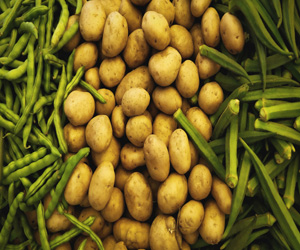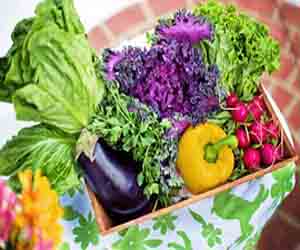


The Art Of Satisfying Palates

The joy of cooking lies not just in the process but in the delightful results - the tasty creations that emerge from your kitchen. These mouthwatering dishes are the embodiment of culinary creativity, flavor mastery, and a source of pure satisfaction. In this article, we delve into the world of tasty creations, exploring the elements that make them so enjoyable and why they hold a special place in our culinary experiences.
The Culinary Playground: The kitchen is a canvas, and tasty creations are the masterpieces. It's a space where culinary artists, from amateur home cooks to seasoned professionals, experiment with flavors, ingredients, and techniques to craft dishes that tantalize the taste buds and ignite the senses. Tasty creations are the result of imagination, innovation, and the passion for food.
Flavorful Alchemy: At the heart of tasty creations lies the art of flavor alchemy. It's about understanding how different ingredients interact, the balance between sweet and savory, the harmony of contrasting textures, and the science behind seasoning. Each dish is a testament to the chef's ability to combine these elements in a way that surprises and delights.
Cultural Fusion: Tasty creations often draw inspiration from diverse culinary traditions. Exploring flavors from around the world adds a dimension of cultural fusion to these creations. The ability to blend the spices of India with the noodles of Thailand, or the cheeses of France with the bread of Italy, creates a global palate that is both exciting and delectable.
A Feast For The Eyes: Tasty creations are not just about taste; they are a feast for the eyes. Presentation plays a significant role in culinary artistry. The way a dish is plated, the colors of the ingredients, and the attention to detail are all factors that contribute to the visual appeal of a creation. A beautifully presented dish is a work of art that makes the dining experience even more memorable.
Personal Touch: Each tasty creation carries the personal touch of the chef. Whether it's a family recipe passed down through generations or an innovative twist on a classic dish, these creations are a reflection of the individual's culinary identity. The act of cooking and the satisfaction of sharing one's creations with others add a unique personal dimension to each dish.
Food As An Experience: Tasty creations elevate food from mere sustenance to a delightful experience. They are more than just a meal; they are moments of culinary enjoyment and shared happiness. A perfectly cooked steak, a rich and velvety chocolate cake, or a fragrant, steaming bowl of curry, all have the power to create lasting memories and connect people through the joy of eating.
Tasty creations are a testament to the artistic potential of cooking. They offer a sensory experience that delights the taste buds, pleases the eye, and warms the heart. Whether you're preparing a feast for a special occasion, experimenting with new ingredients, or simply trying to put a smile on someone's face, these creations are a celebration of the culinary arts. So, let your kitchen be your canvas, your ingredients your palette, and your tasty creations the masterpiece that you share with the world.


A Delicious Journey Back To The Source
 Support For Local Farmers: Farm-to-table dining supports local farmers and strengthens the regional economy. Local farmers are often small-scale, family-owned businesses, and by purchasing their produce, consumers help maintain the livelihood of these farmers.
Support For Local Farmers: Farm-to-table dining supports local farmers and strengthens the regional economy. Local farmers are often small-scale, family-owned businesses, and by purchasing their produce, consumers help maintain the livelihood of these farmers.
Sustainability: The farm-to-table movement champions sustainability in agriculture. Farmers who engage in this practice tend to use eco-friendly, responsible farming methods that prioritize soil health, reduce the use of harmful chemicals, and minimize carbon emissions associated with food transportation.
Community Connection: Farm-to-table restaurants often foster a strong sense of community. Diners have the opportunity to meet the people responsible for growing their food, forging meaningful connections between producers and consumers. Farmers' markets and community-supported agriculture programs further strengthen these connections.
Culinary Treasures That Stand The Test Of Time
 One of the defining characteristics of all-time favorites is their timeless appeal. These are the dishes that remain consistently beloved, regardless of the latest culinary trends. They resonate with our taste buds and our memories, serving as a source of comfort, nostalgia, and satisfaction. These are the recipes we turn to when we seek solace in the familiar.
One of the defining characteristics of all-time favorites is their timeless appeal. These are the dishes that remain consistently beloved, regardless of the latest culinary trends. They resonate with our taste buds and our memories, serving as a source of comfort, nostalgia, and satisfaction. These are the recipes we turn to when we seek solace in the familiar.
Beyond their irresistible flavors, all-time favorites are often imbued with cultural and familial significance. They are the dishes that have been passed down through generations, each version tweaked and perfected over time, resulting in recipes that are deeply rooted in tradition. All-time favorites provide a connection to our culinary heritage, preserving the techniques, ingredients, and flavors that have been treasured for centuries.
A Recipe For Health And Sustainability
 Health Benefits: Organic cooking prioritizes the quality and nutritional value of ingredients. Here are some key health benefits associated with organic cooking:
Health Benefits: Organic cooking prioritizes the quality and nutritional value of ingredients. Here are some key health benefits associated with organic cooking:
Nutrient-Rich Ingredients: Organically grown foods tend to be richer in essential nutrients, such as vitamins, minerals, and antioxidants. This means that meals prepared with organic ingredients can provide a more substantial nutritional punch.
Avoiding Harmful Chemicals: Organic cooking eliminates the risk of ingesting synthetic pesticides and herbicides commonly found on conventionally grown produce. These chemicals have been linked to various health issues, making organic options a healthier choice.
Reduced Exposure To Antibiotics And Hormones: Organic meats and dairy products come from animals that are raised without antibiotics and synthetic hormones. By consuming organic animal products, you reduce your exposure to these potentially harmful substances.
Better For Allergies: Organic foods have been reported to be less likely to trigger allergies due to their lack of synthetic chemicals and genetically modified ingredients.
Sustainability And The Environment: Organic cooking is not only beneficial for your health but also for the planet. Sustainable farming practices that go hand-in-hand with organic cooking have several environmental advantages:
Nourishing Your Body And Soul
 1. Nutrient-Rich Meals: Wholesome cooking allows you to maximize the nutritional value of your meals. By using fresh fruits, vegetables, whole grains, lean proteins, and healthy fats, you ensure that your body receives the essential vitamins, minerals, and antioxidants it needs.
1. Nutrient-Rich Meals: Wholesome cooking allows you to maximize the nutritional value of your meals. By using fresh fruits, vegetables, whole grains, lean proteins, and healthy fats, you ensure that your body receives the essential vitamins, minerals, and antioxidants it needs.
2. Flavorful Dishes: One of the highlights of wholesome cooking is the exceptional flavor of the dishes you prepare. Using fresh and natural ingredients results in meals bursting with taste, aromas, and textures that can't be replicated by processed foods.
3. Control Over Ingredients: Wholesome cooking gives you complete control over what goes into your food. You can avoid excessive salt, sugar, and unhealthy fats, ensuring that your meals align with your dietary preferences and health goals.
Reducing Environmental Footprints
 3. Consumer Demand: As consumers become more eco-conscious, they actively seek products with sustainable packaging, influencing manufacturers to adapt their practices.
3. Consumer Demand: As consumers become more eco-conscious, they actively seek products with sustainable packaging, influencing manufacturers to adapt their practices.
4. Regulatory Pressure: Governments and organizations are imposing regulations and guidelines to encourage or mandate sustainable packaging practices.